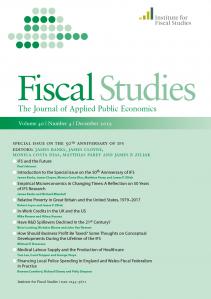
Consumption and prices
Our work in this area looks at how consumers respond to price signals and other incentives to change their borrowing, saving and spending behaviour, as well as how different households' welfare is affected by inflation and changes in indirect taxes.
Focus on
Showing 101 – 120 of 731 results




















